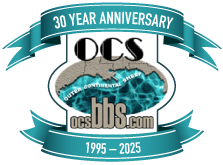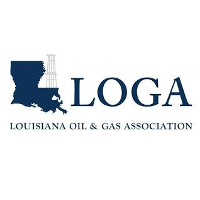Blowout and Fire
Effective Date: 5/13/1983
 | Minerals Management Service Gulf of Mexico OCS Region |
Notice No. 111
May 13, 1983
Blowout and Fire
A pilot hole had been drilled to surface casing setting depth on a platform directional well located in an area which experienced problems with severe heaving unconsolidated shale (gumbo), lost circulation, gas-cut mud, swabbing on trips, and well flow. The well was equipped with two strings of conductor casing. While making a short trip, prior to logging surface hole, swabbing was noticed. Six more stands were pulled with the well circulated on each stand. The well was then circulated to remove any gas from the annulus, but the well began flowing. Drill pipe was started back in the hole, but after one stand was added, increasing annular well flow necessitated circulating the well through the diverter system. To conserve mud, well returns were diverted through the mud-gas separator.
Well flow increased and the other diverter valve was actuated to divert the flow overboard, but the valve would not open with continued efforts over a 30 minute time span. The 6-inch line to the mud gas separator then plugged with gumbo and parted requiring that diverter valve to be closed, resulting in the well being completely closed-in. Further efforts to open the overboard diverter valve were unsuccessful and casing pressure was subsequently noted at 1,000 psi. The annular preventer element failed approximately one-half hour later, and the well blew out of control. All power was shut down, and personnel were evacuated from the platform in escape capsules. The well caught fire several hours later and burned until the fire went out three days later because of increased saltwater flow. The well continued to blow shale and water for another four days and then apparently bridged. The operator pumped mud and seawater into the well, and installed a new spool and blind rams. Extensive damage to drilling equipment, platform facilities and wellheads was estimated at $13 million. There were no fatalities, no injuries and no pollution. Subsequently, a workover rig cleaned out the hole to the depth of the second string of conductor casing; and the well was plugged with cement for temporary abandonment. In order to prevent recurrence of this type of incident, the following precautions are recommended:
1. Diverter controls and control lines should be protected from damage and checked for proper installation. The diverter system should be functionally operated frequently. Diverter lines should be as free from sharp bends as possible.
2. In areas where severe gumbo problems indicate a significant potential for plugging of the diverter lines, consideration should be given to select diversion which offers the least restriction to flow.
3. In severe gumbo-problem areas, factors such as drilling mud viscosity, drilling rate and annular velocities should be specifically planned and controlled to maximize removal of drill cuttings and gumbo and minimize lost circulation and swab potential.
[signed] D.W. Solanas
Regional Supervisor
Offshore Operations Support






